Thai Omelette (Kai Jeow)
By Lee Jackson ↣ Published on: September 24, 2023
For a fresh, vibrant breakfast, lunch or dinner, a quick and simple Thai omelette delivers all the fragrance and flavour you need. Soft, pillowy eggs with a crisp exterior are the perfect match with fragrant herbs and spicy chillies.
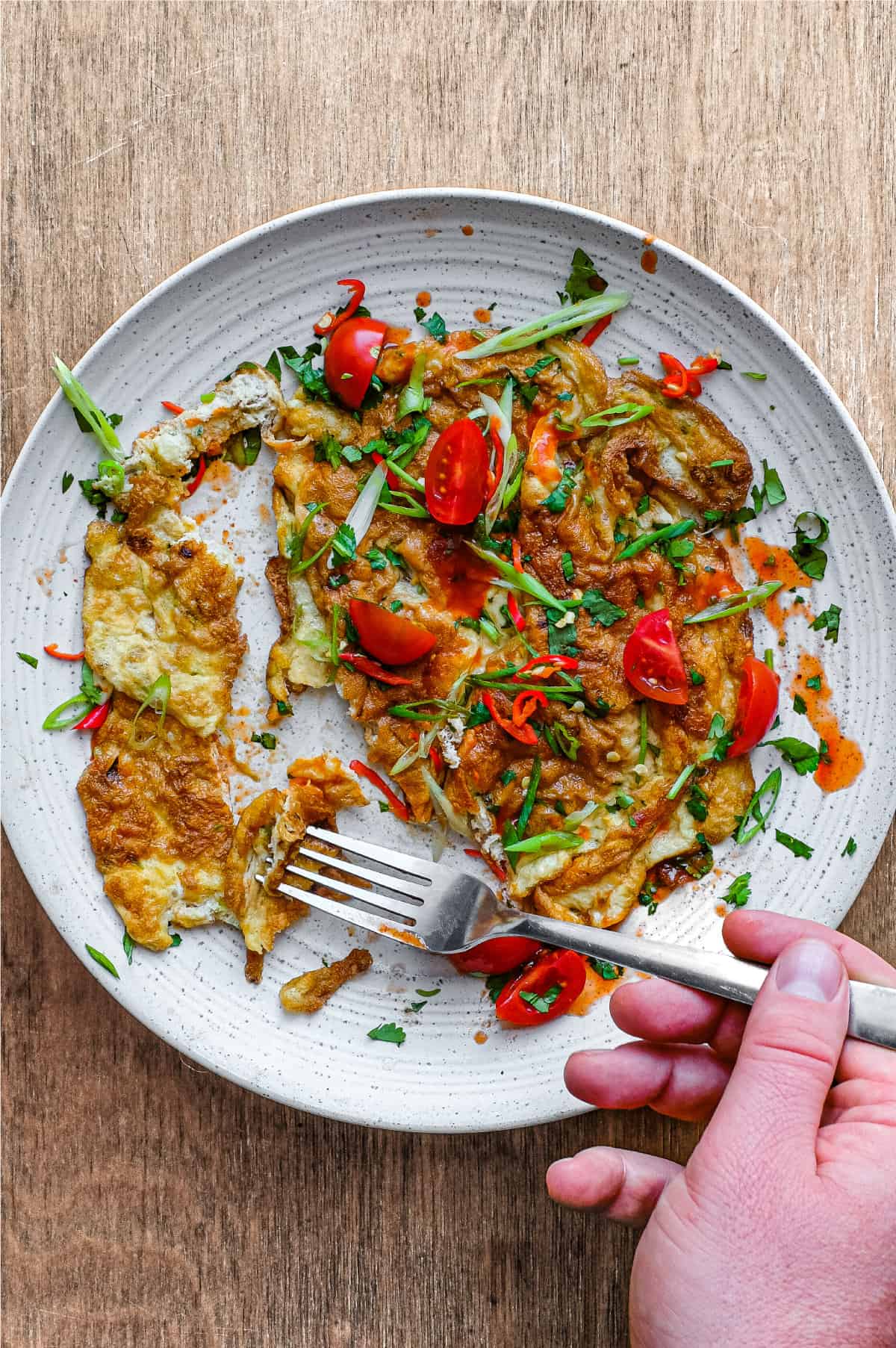
When I'm looking for a quick, easy and tasty Thai treat, I invariably turn to this super quick and easy Thai omelette. A fantastic blend of flavour, fragrance and texture - not to mention colour too!
Omelettes are easy and when they're cooked Asian style they have the fluffiest texture with a crispy coating that's everything! I'll cook this for breakfast, lunch or dinner over a bed of fragrant Jasmine rice. It's also perfect alongside other Thai favourites like Chicken Larb, Pad Prik King or Crying Tiger Beef.
The flavours marry perfectly, salt and spice are in full effect alongside fragrant and floral with the herbs. I like my omelette hot so always dress it with a fiery sriracha sauce and some even more spicy Thai chillies.
What's Ahead?
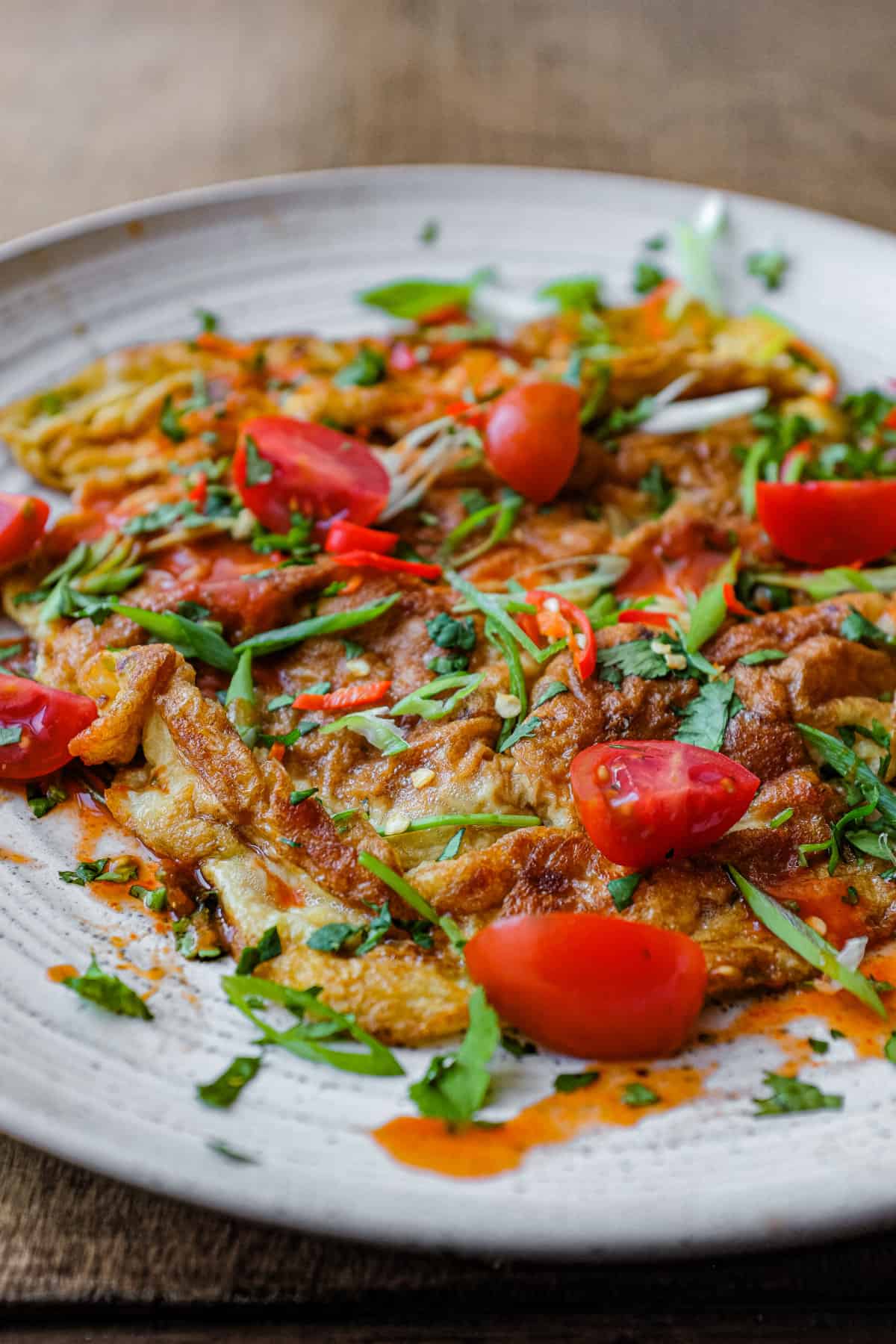
What is Kai Jeow?
Kai Jeow, also known as Thai omelette, is a beloved street food in Thailand. It consists of eggs beaten with fish sauce and often includes ingredients like onions, tomatoes, and chilies for added flavor and texture. This simple yet flavorful dish is commonly served with rice and is a staple in Thai cuisine.
Why it works?
It's quick and easy - with few ingredients and even fewer steps, this omelette is a perfect dish for breakfast or lunch when time is of the essence. You can also eat it at room temperature, so meal prep is also a great option.
It packs a punch - I love spice, so adding a little sriracha chilli sauce and a sprinkle of devilish Thai chillies is what makes this so memorable.
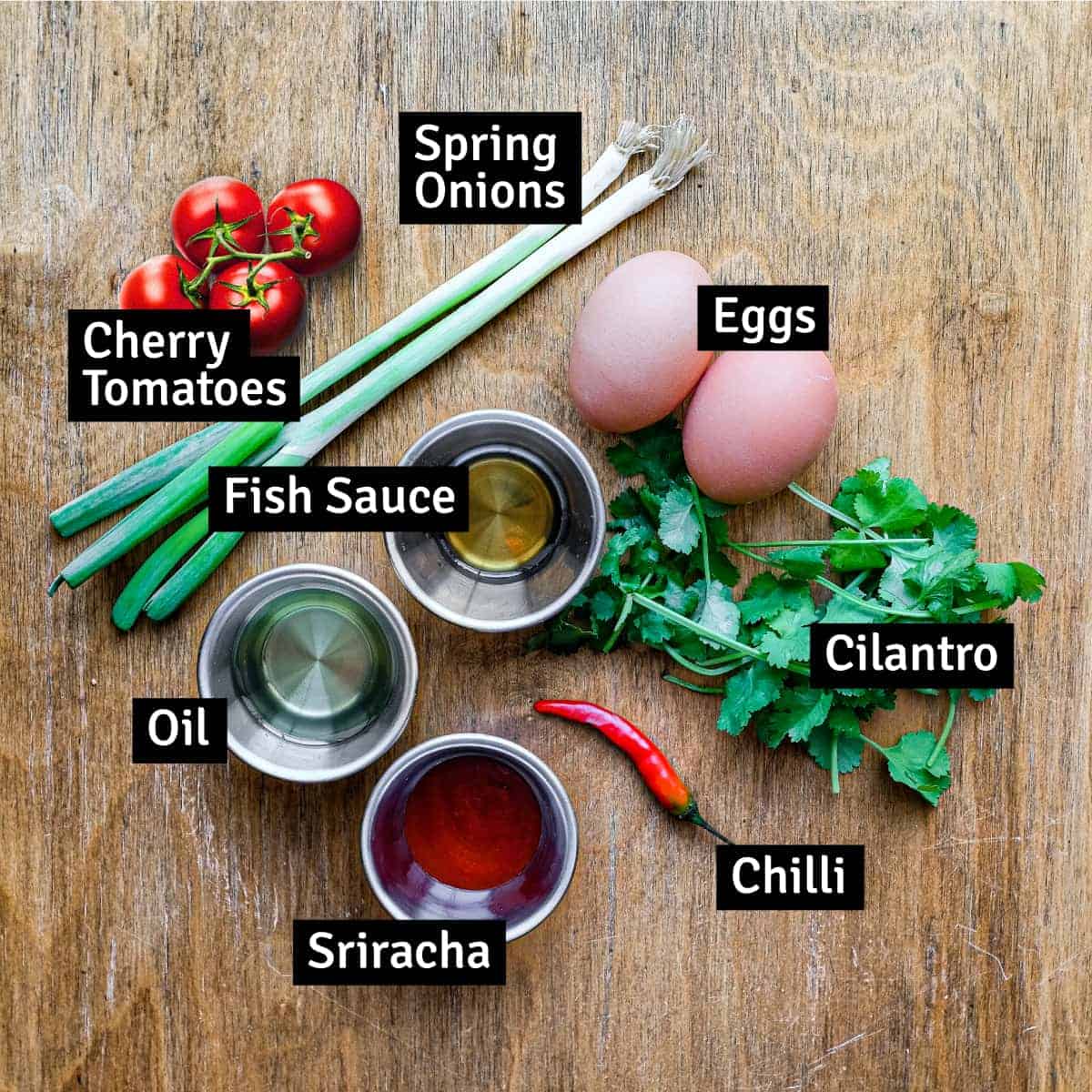
Stuff You'll Need
There's not a lot to the recipe, here's what goes into making this dish so special.
- Eggs
- Vegetable oil - there's probably more oil than you'd typically use normally but it's essential in creating the crispy AND fluffy texture.
- Fish Sauce - the salty, funky umami fish sauce adds all the Thai personality.
- Spring onion & cilantro - bring all the fragrance to the garnish.
- Sliced cherry tomato - for a sweet, tart addition of flavour.
- Sriracha sauce - a drizzle of sauce adds a little more Thai flavour
- Thai chillies - spicy chilli (and the seeds please), turn up the heat.
Step by Step
Making this Thai omelette is simple as can be - here's how.
- Step 1 - Combine the beaten egg with a little chopped spring onion and fish sauce.
- Step 2 - Using a wok, heat the oil until hot then pour in the egg mixture. It will puff up immediately. Let this cook for 2 minutes then flip it over for another two. The exterior will be crisp and the interior light and fluffy. Drain on paper towels and then serve hot or leave to cool.
All that's needed now is to garnish it with the tomato, more spring onion, some cilantro, a squirt of Sriracha and a generous (or timid) sprinkle of sliced Thai chillies.
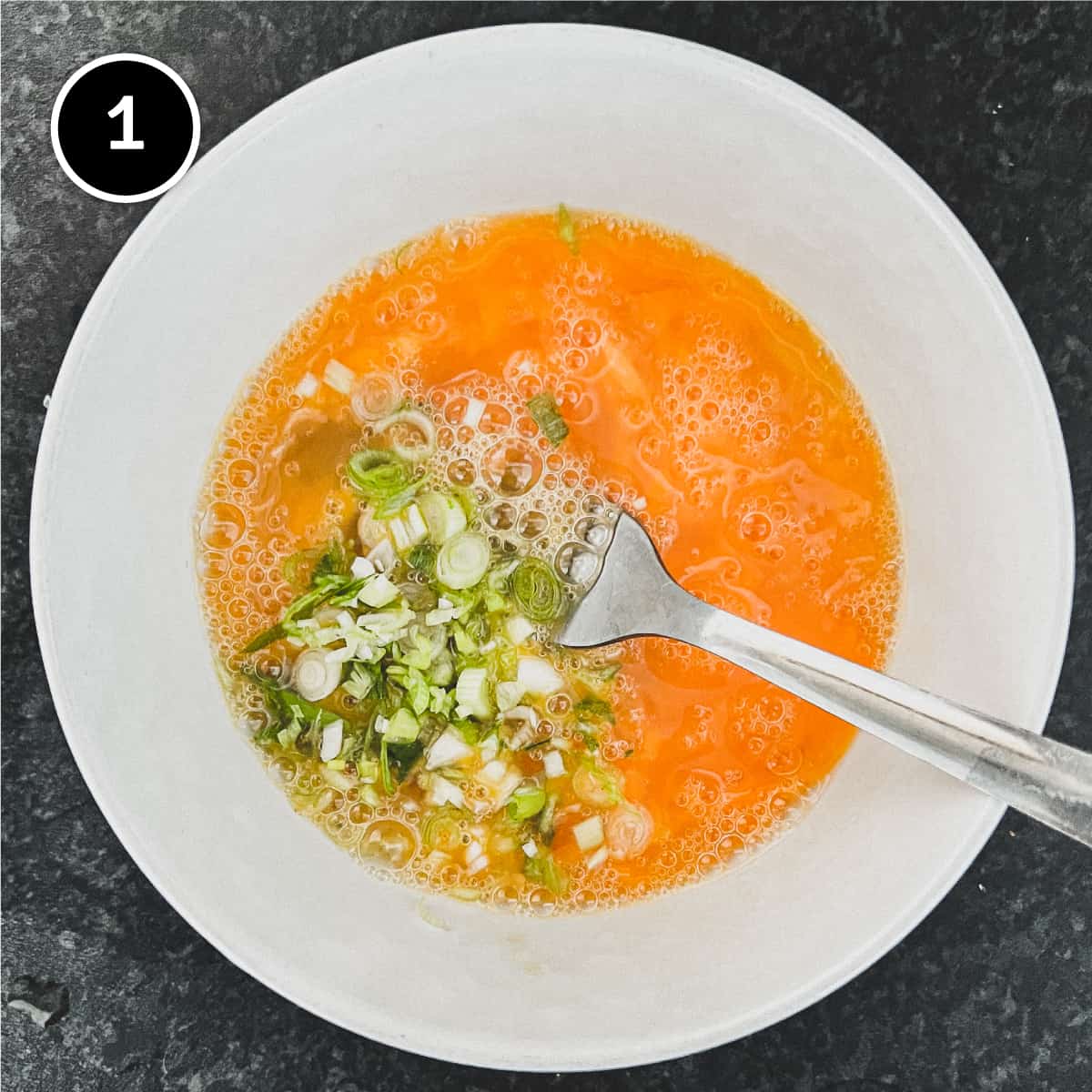
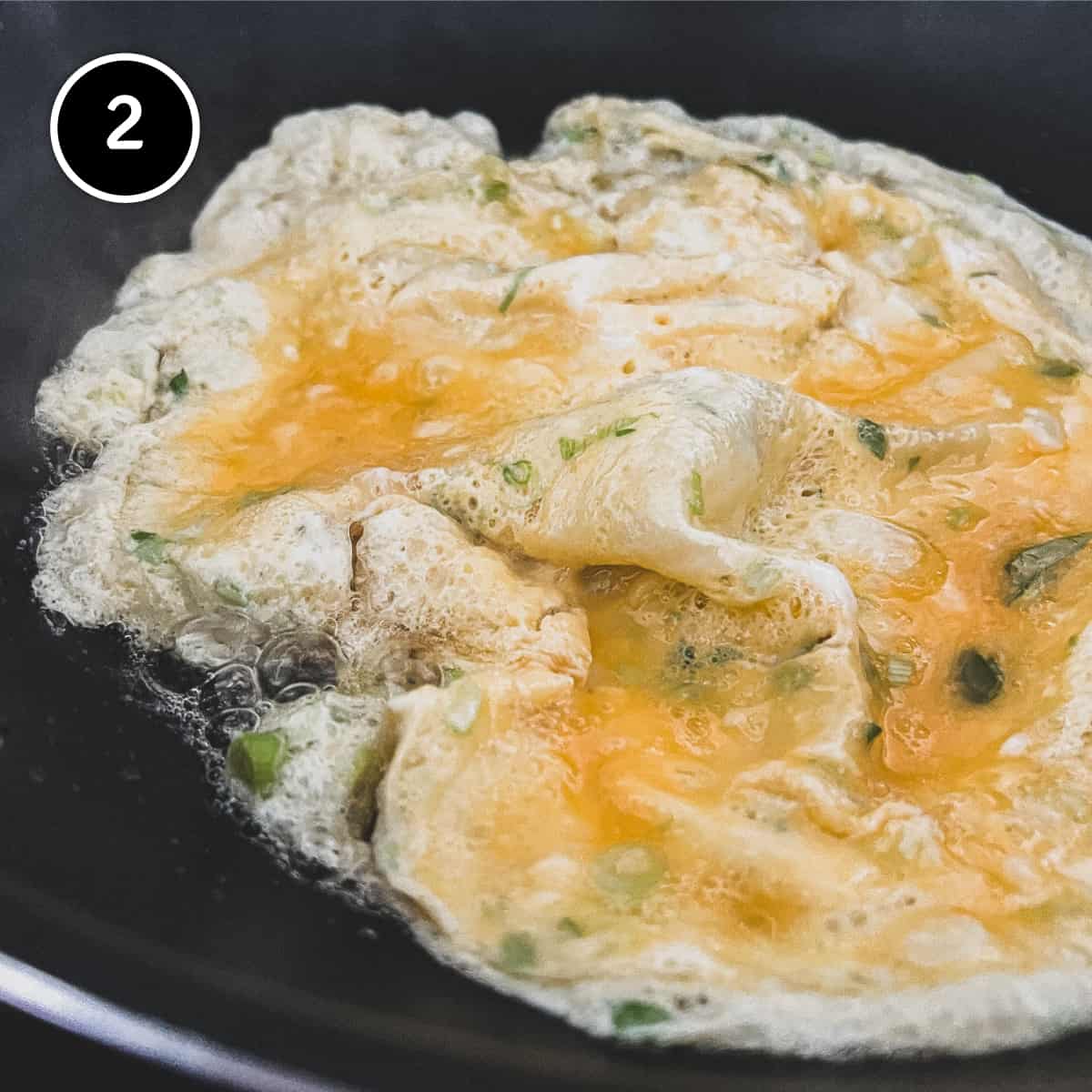
Serving & Storage Suggestions
- Serving - At its simplest, I serve Thai omelette on its own, or over a bed of fluffy and fragrant Jasmine rice.
- Alternative toppings - My recipe uses only a small selection of the toppings you could consider for your omelette. I've made versions topped with all manner of fresh ingredients. Try roasted peanuts, cucumber, beansprouts, crispy shallots, crispy garlic, lightly pickled (in rice vinegar) vegetables like carrot, radish etc., fresh lime, fresh ginger and more.
- Alternative versions - There are many variations which include spiced or stir-fried meats like pork or chicken and seafood versions with spiced shrimp and dressed crab either topping, wrapped or incorporated into the egg.
- That's a wrap - You can also use your omelette to wrap or cover other Thai favourites like fried rice or spicy larb.
- Fridge storage - The omelettes will stay fresh in the fridge (properly covered or in sealed bags) for 3-4 days. They can be eaten cold or gently rewarmed.
- Freezer storage - Omelettes aren't the best for freezing so I would say fresh is best on this occasion.

Ready to get cooking?
So, now you've seen just how easy this delight is to make at home, there should be no stopping you! It's a fantastic alternative to the familiar omelette we're used to and packs so much flavour you'll likely never go back to the old kind. I hope you enjoy!
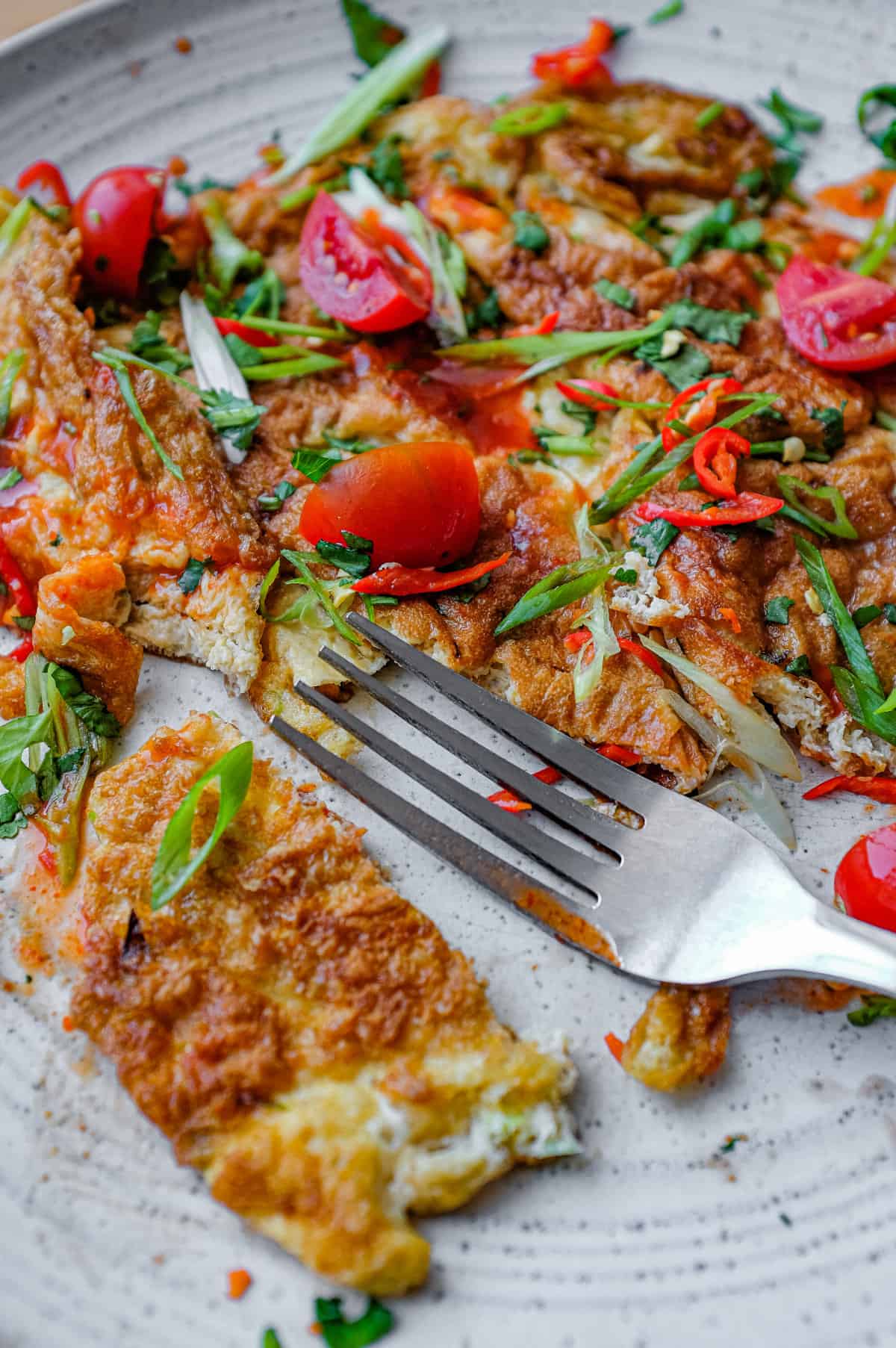
More of my favourite Thai & South East Asian recipes
If you liked this recipe for my Thai Omelette (Kai Jeow), I'm sure you'll love some more of my favourite Thai and South East Asian recipes.
- Thai Curry Noodle Soup with Salmon
- Satay Chicken Curry
- Thai Beef Salad (Yum Nua)
- Thai-Style Grilled Chicken (Gai Yang)
- Beef Massaman Curry
- Thai Peanut Satay Sauce
- Thai Satay Skewers
- Thai Panang Chicken Curry
- Thai Yellow Curry with Minced Pork
- Cha Kroeung Sach Moan (Cambodian Lemongrass Chicken Stir-Fry)
- Laotian Nam Khao (Crispy Rice Salad)
- Satay Chicken Curry
- Laotian Chicken Larb (Larb Gai)

Any Questions? (FAQ)
Have a question about my Thai Omelette? Let me know in the comments.
How is a Thai omelette different from a regular omelette?
Thai omelettes, known as "Kai Jeow," are distinct for their fluffy texture, use of fish sauce, and optional ingredients like shrimp, onions, and chili. They often have a unique sweet and savoury flavour profile.
What are common variations of Thai omelettes?
Popular variations include Kai Jeow Moo Sab (pork omelette), Kai Jeow Goong (shrimp omelette), and Kai Jeow Poo (crab omelette). These incorporate different proteins and flavors to suit individual preferences.
What is the traditional way to serve a Thai omelette?
Thai omelettes are typically served with jasmine rice and a drizzle of Sriracha or chilli sauce. They can also be accompanied by cucumber slices and a wedge of lime for added freshness and zing.
This recipe uses affiliations and may receive a commission based on your activity (link clicks). Learn more.
Ingredients
- 2 eggs
- 1 tbsp fish sauce
- 2 spring onion (finely sliced)
- 3 tbsp vegetable oil
- 1 Thai chilli (thinly sliced)
- 2 tbsp Sriracha sauce
- 4 cherry tomatoes (halved or quartered)
- 2 tbsp cilantro (chopped)
Instructions
- Add the eggs and fish sauce to a small bowl and beat until combined. Add one of the spring onions finely chopped.
- In a wok, over a high temperature, heat the oil until hot. Add the egg mix and leave it to bubble and sizzle for 1-2 minutes. The egg will puff up and brown.Flip it carefully and leave to cook for another 1-2 minutes. The outer will be browned and lightly crisp. Remove from the pan and drain on paper towels.
- Place on a plate or over a shallow bed of freshly cooked rice and scatter over the chilli, tomato and cilantro. Drizzle over the Sriracha and serve.
Notes
- Serving - At its simplest, I serve Thai omelette on its own, or over a bed of fluffy and fragrant Jasmine rice.
- Alternative toppings - My recipe uses only a small selection of the toppings you could consider for your omelette. I've made versions topped with all manner of fresh ingredients. Try roasted peanuts, cucumber, beansprouts, crispy shallots, crispy garlic, lightly pickled (in rice vinegar) vegetables like carrot, radish etc., fresh lime, fresh ginger and more.
- Alternative versions - There are many variations which include spiced or stir-fried meats like pork or chicken and seafood versions with spiced shrimp and dressed crab either topping, wrapped or incorporated into the egg.
- That's a wrap - You can also use your omelette to wrap or cover other Thai favourites like fried rice or spicy larb.
- Fridge storage - The omelettes will stay fresh in the fridge (properly covered or in sealed bags) for 3-4 days. They can be eaten cold or gently rewarmed.
- Freezer storage - Omelettes aren't the best for freezing so I would say fresh is best on this occasion.
Nutrition
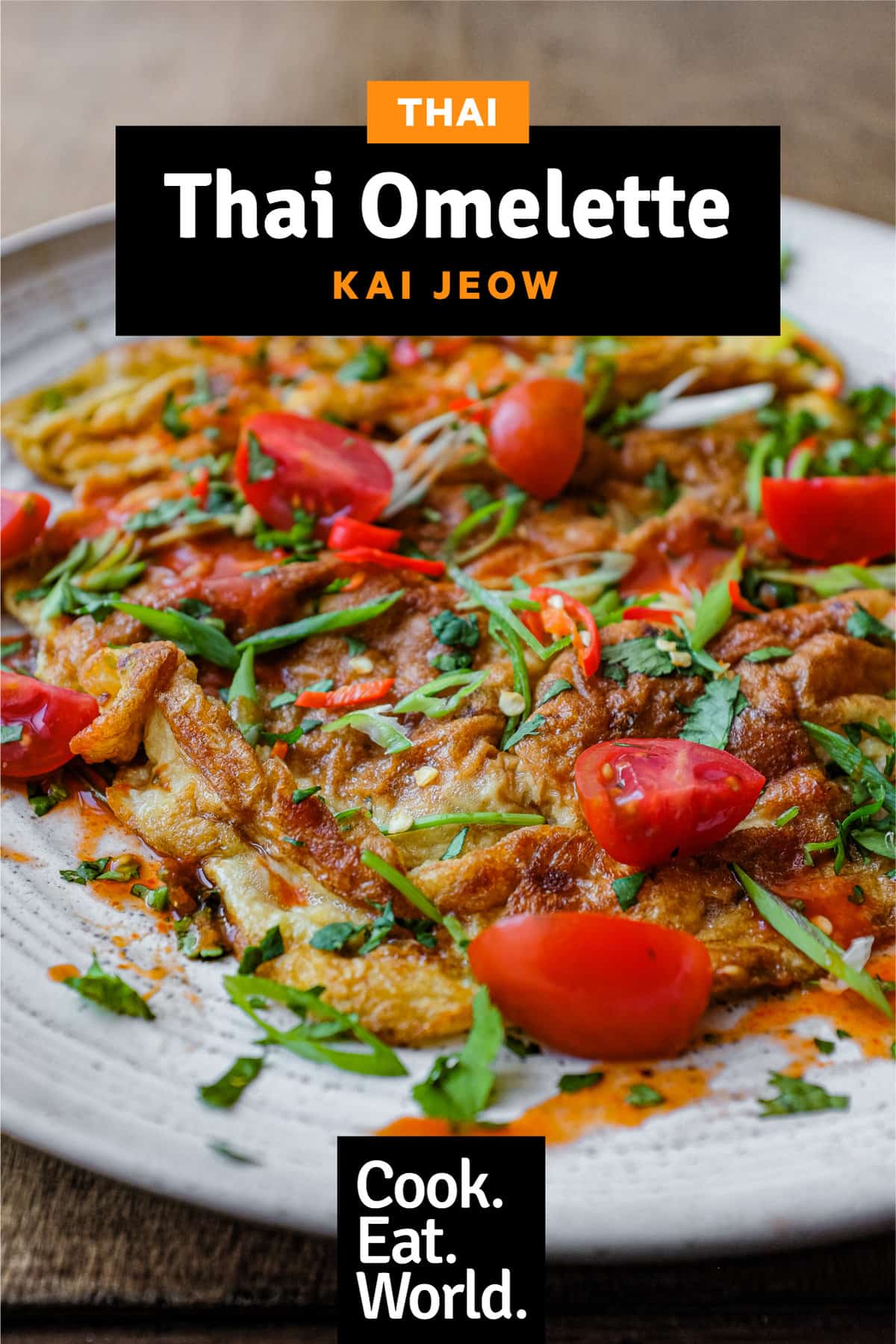
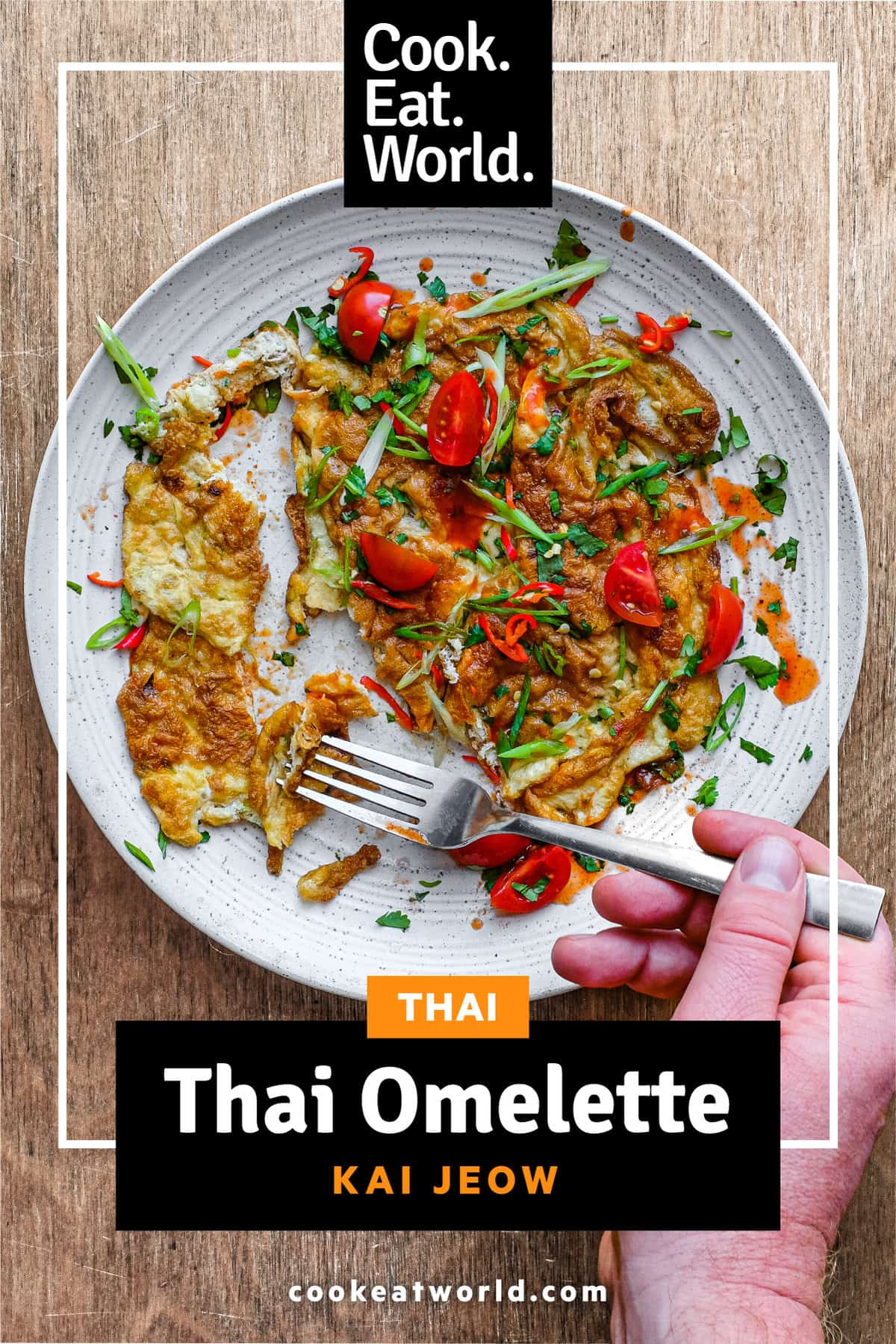


Leave A Comment